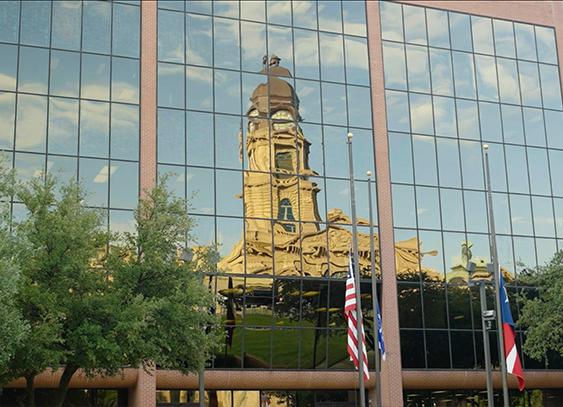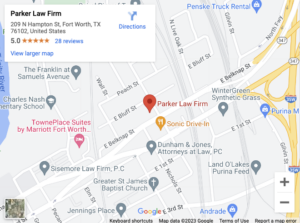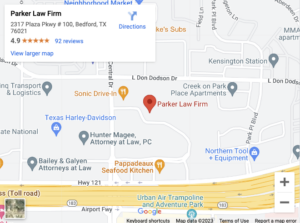
If you’ve been injured due to another person or entity’s negligence, you may be able to file a personal injury claim to receive compensation. For a successful personal injury claim, causation and other legal elements must be established. It’s essential to understand what causation is, how to prove it, and what defendants will do to try to refute it.
What Is Causation?
In a personal injury case, causation refers to the connection between an event and the resulting harm or damages. For example, if a business owner fails to maintain their premises and someone slips on a wet floor due to a lack of warning signs, this can be considered the cause of the accident.
In order for an injured person to succeed with their claim, they must prove that the other party’s actions (or lack thereof) were the direct cause of their injuries.
Additionally, an accident victim must prove that the defendant owed them a duty of care, breached it, and caused them to sustain damages. These are the elements of negligence.
Establishing Causation in a Texas Personal Injury Claim
Establishing causation is a key element of any personal injury claim. For a claimant to receive compensation, they must be able to prove that the defendant is responsible for the injuries they have sustained. To do this, claimants must present evidence that establishes a clear chain of causation between the defendant’s actions and the plaintiff’s injuries.
Using Expert Witnesses and Other Evidence To Prove Causation
There are many different types of evidence that can be used when establishing causation in a personal injury claim.
Medical records and reports from doctors can help support a victim’s case by providing evidence of the extent of their injuries and how the defendant’s actions or negligence caused them. Additionally, photographs taken at the scene of the accident can help establish where the fault lies and provide visual evidence of any property damage or injuries suffered.
In many cases, expert witnesses are used by both sides in personal injury claims to establish causation. An expert witness can provide valuable insight into how an accident occurred and what factors may have contributed to it. They can also explain why certain injuries were sustained and how much they are worth in terms of damages or compensation.
For example, if you were injured in a car accident due to someone else’s negligence, you need to be able to prove that your injury was directly caused by their actions – such as speeding or running a red light – rather than something else.
In order to do this, you could use eyewitness testimony, photographs taken at the scene, medical records relating to your injury, and expert testimony explaining what factors likely contributed to your injuries.
The Legal Defenses To Causation in Personal Injury Claims
There are certain legal defenses the defendant can use to challenge causation and defend themselves against liability. The following are some of the most common ones:
Pre-Existing Conditions or Injuries
One of the most common defenses used in personal injury claims is pre-existing conditions or injuries. If it can be proven that the plaintiff had an existing condition or injury prior to the incident in question, the defendant will try to argue that their negligence didn’t cause harm to the victim; they were already injured.
For example, suppose a person files a slip and fall lawsuit, and it is discovered that they had an existing back injury before they fell. The defendant may try to use this as evidence that their back pain was not caused by the fall itself but rather by their pre-existing back problem.
Intervening Events or Actions
Another defense commonly used in personal injury claims is that an intervening or superseding cause occurred after the defendant’s actions. In other words, something else happened after an initial event that could have caused or worsened the plaintiff’s injuries.
For example, suppose a pedestrian is struck by a vehicle. Subsequently, they receive negligent medical care for their pedestrian accident injuries, worsening their condition. In this case, the negligent driver may argue that the intervening cause – medical malpractice – should reduce their liability.
Comparative Negligence
The last defense commonly seen in personal injury cases is comparative negligence. If it can be proven that the plaintiff shares fault for the accident, they may be held partially responsible for contributing to the cause.
For example, a motorcyclist was hit by a negligent truck driver but was speeding at the time of the collision. The motorcyclist may be apportioned a percentage of fault for exceeding the speed limit. Their share of fault can reduce the truck driver’s liability. So if the motorcycle rider were 30% to blame, the truck driver would only be responsible for 70% of their damages.
Note that under Texas law, victims who share more than 50% of the blame are barred from recovering compensation.
A Bedford Personal Injury Lawyer Can Help You Prove Causation
If you need help proving the elements of a Texas personal injury claim, including causation, Contact an experienced personal injury attorney from Parker Law Firm Injury Lawyers today at (817) 839-3143 for an initial free case evaluation.


